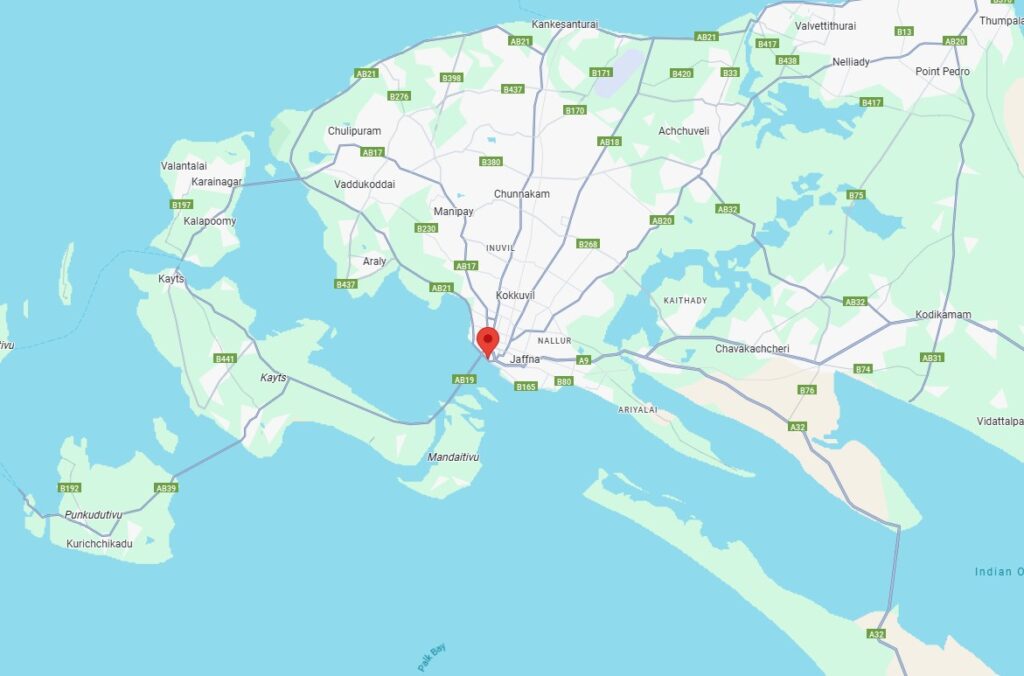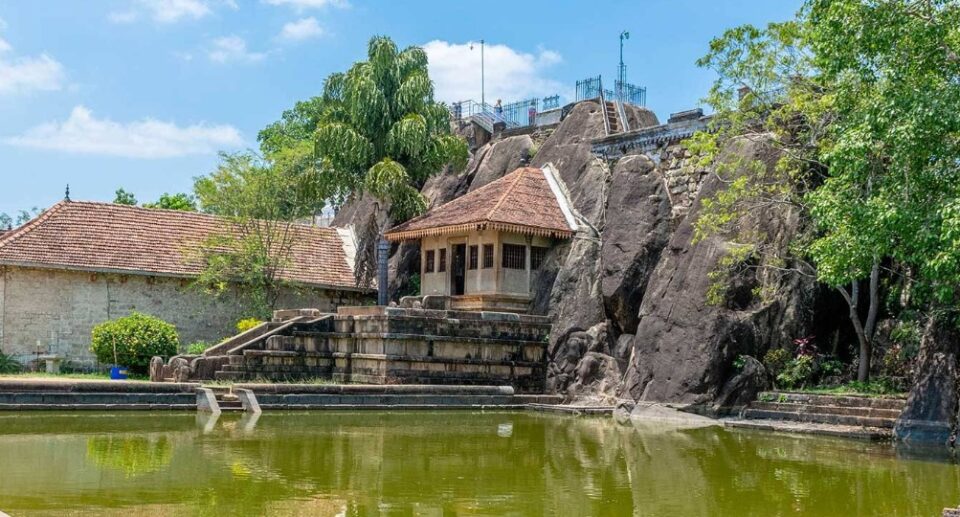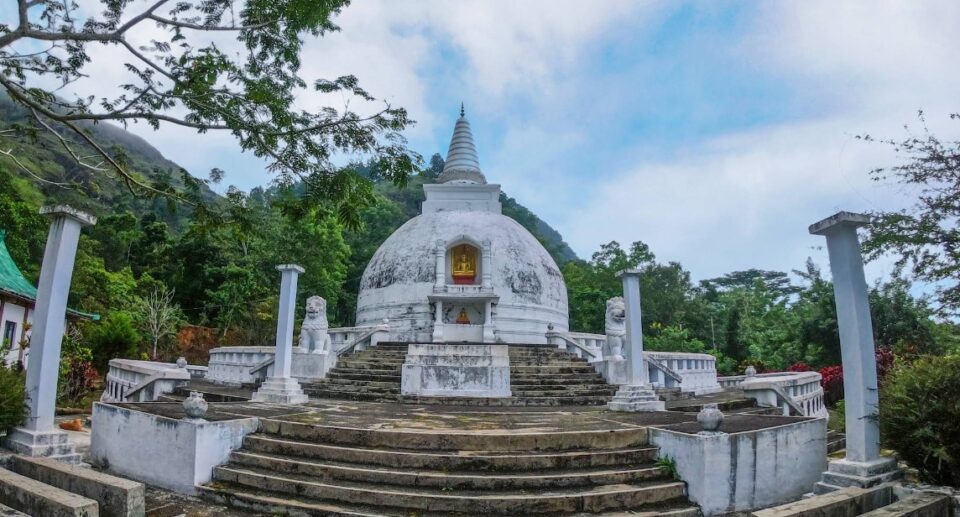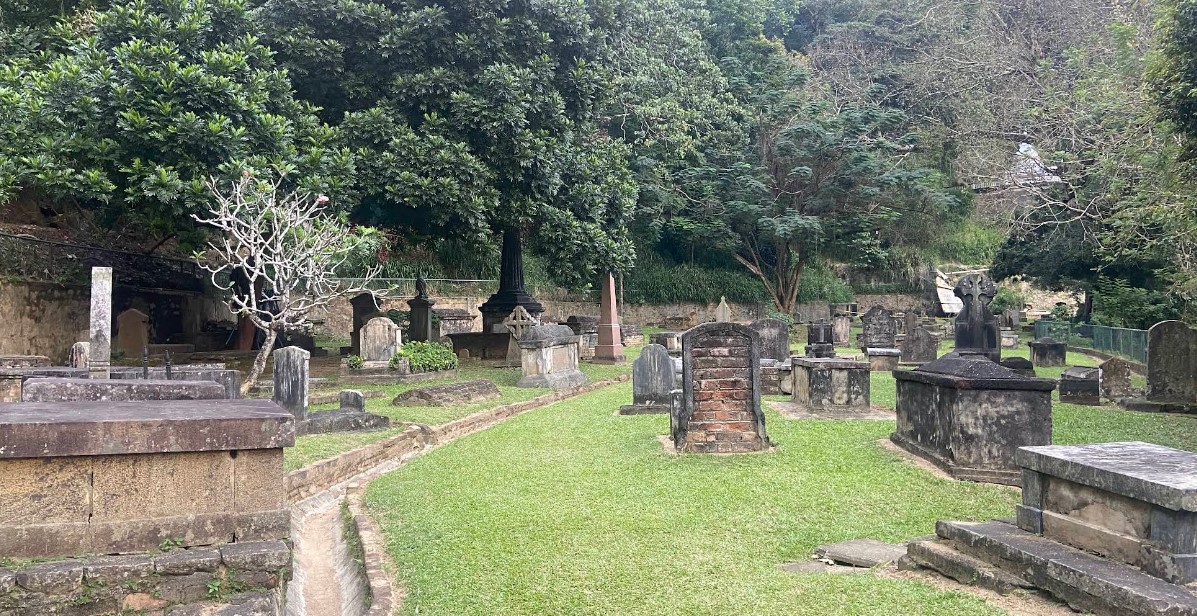Jaffna Fort: A Historical Bastion of Sri Lanka’s Northern Heritage
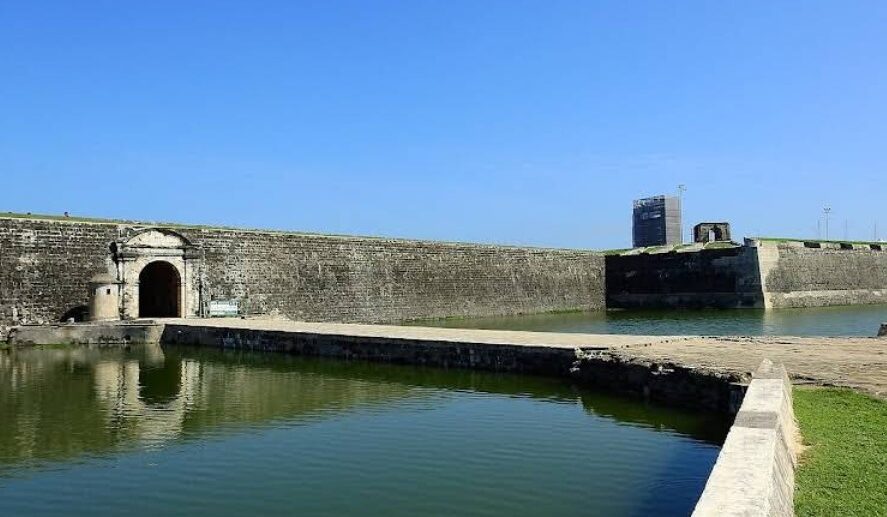
A Legacy of Colonial Heritage in Northern Sri Lanka
Jaffna Fort, the great stone fort in the northernmost point of Sri Lanka, stands witness to the nation’s turbulent colonial past and enduring strategic importance. Constructed by the Portuguese in 1618, and later fortified by the Dutch and British, Jaffna Fort served not only for military purposes, but was also a key location of administration and trade. The fort today is an epic monument, reflecting centuries of architectural evolution, cultural exchange, and historical transformation.
- Historical Background
The Jaffna Fort has a history that goes back to the early 17th century when the Portuguese occupied Sri Lanka’s coastal regions. Philippe de Oliveira, a captain of the Portuguese, in 1618 ordered the construction of a fort to protect the Jaffna Peninsula from local uprisings and external assaults. The location was ideal since it was near the sea and allowed the Portuguese to monitor naval routes and commerce.
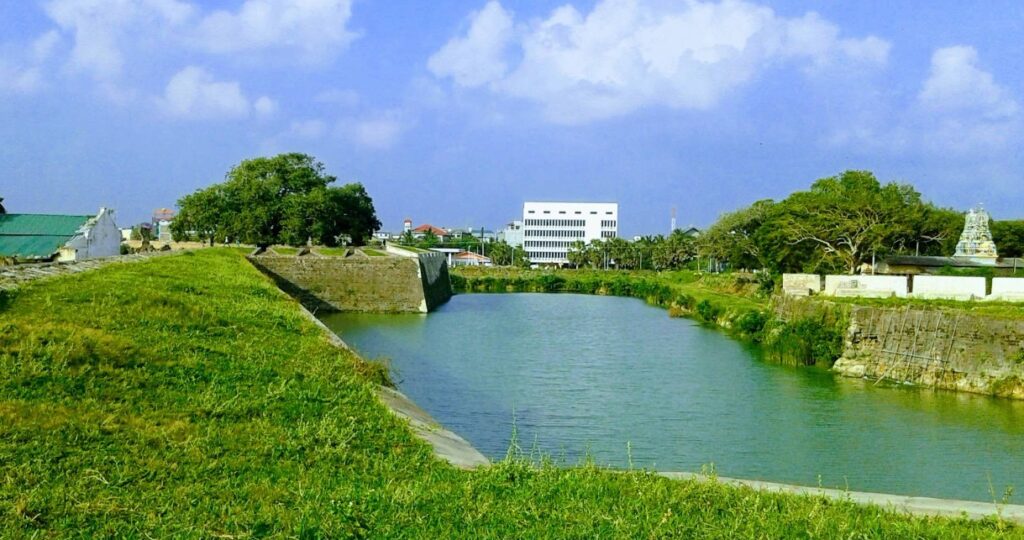
However, in 1658, the Portuguese were overrun by the Dutch East India Company (VOC) and lost Jaffna. Realizing the strategic value of the fort, the Dutch strengthened and expanded the structure, which became one of the most powerful forts in Asia at that time. The Dutch renamed it Fort Jaffnapatnam, and it became the administrative center of the northern province.
In 1795, the British took Jaffna Fort with minimal resistance as part of their general capture of Dutch colonies in the East during the Napoleonic Wars. Under the British, the fort continued to be a military and administrative center until Sri Lankan independence in 1948.
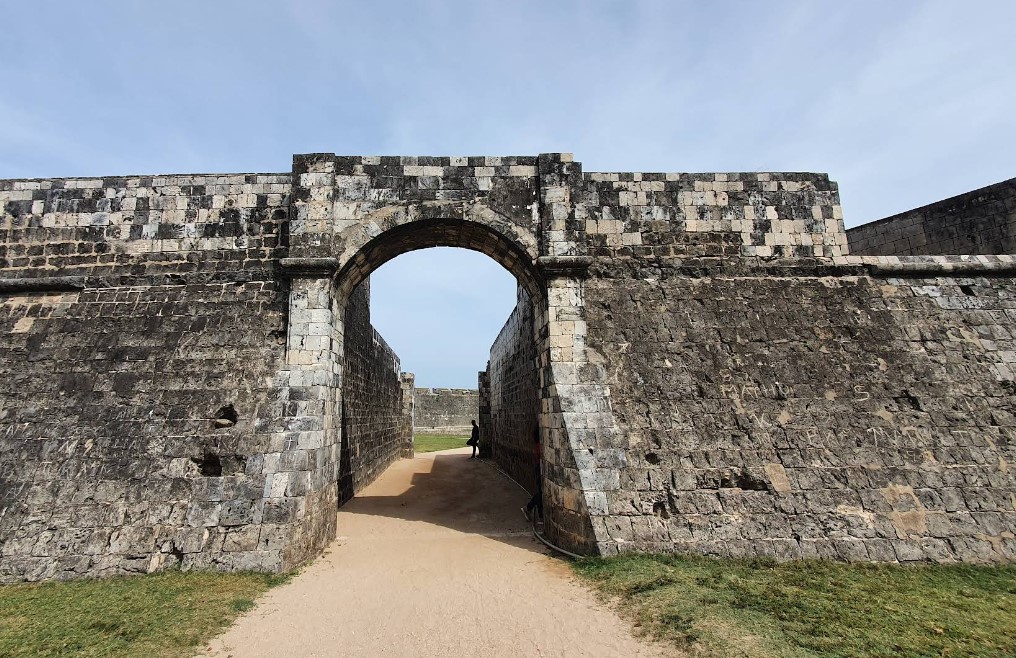
- Strategic Importance
Under colonial rule, Jaffna Fort was as much a symbol of power as it was a military base. It allowed the colonial powers to dominate northern Sri Lanka and its strategically valuable maritime connections. Jaffna had been an important trading center, especially for commodities like tobacco, cotton, and pearls. The fort offered an inlet for these, allowing colonial powers to control and tax the trade.
In more recent history, particularly during the Sri Lankan Civil War (1983–2009), Jaffna Fort was used as a strategic military base by both the Sri Lankan Army and the Liberation Tigers of Tamil Eelam (LTTE) at various points in time. The fort was severely devastated in the war but has since been rebuilt.
- Architecture and Layout
Jaffna Fort is a good example of European military architecture adapted to South Asian conditions. Constructed initially in the Portuguese bastion style, the fort was reshaped by the Dutch into a star fortress, the latest and most successful fortification design of the 17th century.
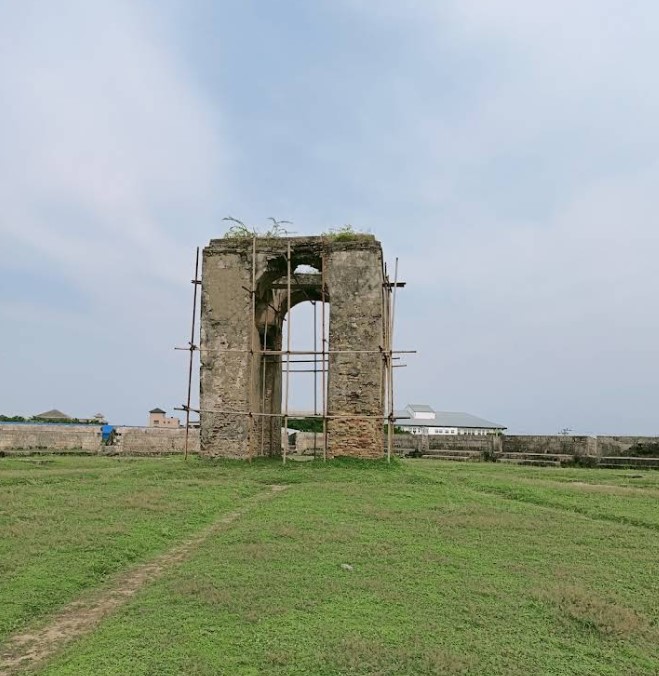
The fort is surrounded by high walls, bastions, and a moat, covering over 25 hectares. The significant architectural features are:
The Moat and Ramparts: The five-pointed star design of the fort has five bastions and an outer moat which was filled with water to deter intruders. The walls, constructed of coral and limestone, are extremely thick.
The Gatehouse: The gatehouse door has a Dutch inscription and is topped by a guard tower, from which the surrounding area could be controlled.
The Governor’s House and Kruys Church: Within the fort are ruins of colonial structures such as the Governor’s house, a Dutch Reformed Church (Kruys Church), and administrative offices.
Barracks and Powder Magazines: There are still remnants of gunpowder storage houses and soldiers’ barracks, pointing to the military nature of the fort.
British Additions: Later additions such as British guardhouses and flagstaffs point to the change in colonial rulers.
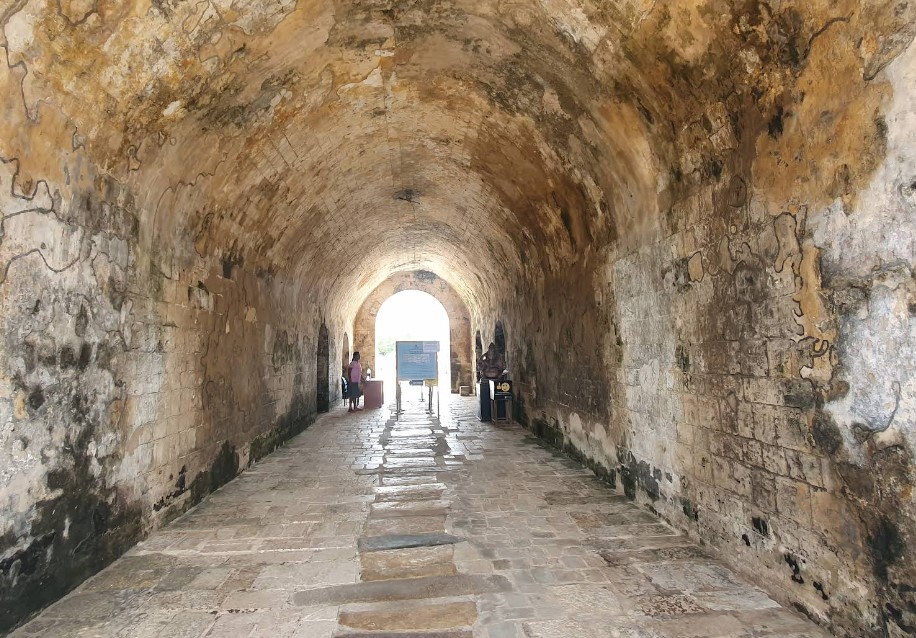
- Cultural and Religious Influence
Apart from its administrative and military role, the fort also played a part in religious activities. The Kruys Church was constructed by the Dutch and served as a place of worship for the Protestant Dutch. Anglican services also took place under the British.
The multicultural influences within and around Jaffna Fort also bear witness to the region’s centuries-old history of Tamil, Sinhalese, Portuguese, Dutch, and British interaction. Jaffna, being a predominantly Tamil region, maintained its distinct culture even during colonial times, and the fort stood silently as witness to the coexistence and sometimes conflict of these diverse communities.
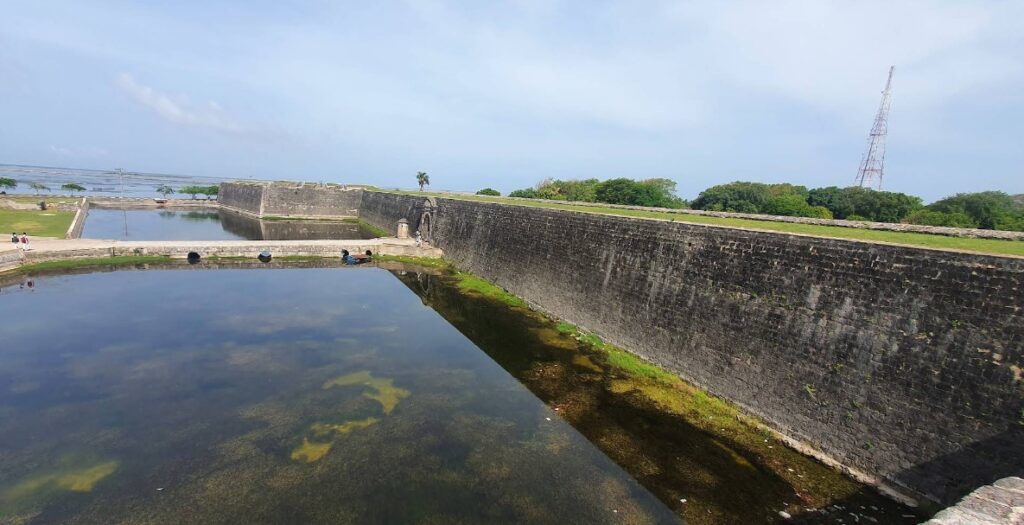
- Sri Lankan Civil War role
The Jaffna Fort resumed military importance during the Sri Lankan Civil War. The fort changed hands several times between the Sri Lankan Army and the LTTE from the late 1980s to the early 2000s. As a strategic fortress, the person occupying the fort had a commanding control of the surrounding area.
There was intense combat during this time, and the fort suffered extensive damage. Major portions of the inner buildings were destroyed, and the walls were pockmarked with shell and bullet holes. The fort remained a high-security zone for a few years until the war ceased in 2009.
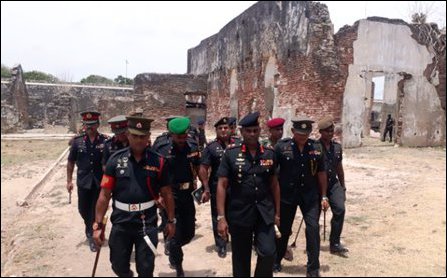
- Restoration and Preservation
Once the civil war came to a conclusion, restoration work was undertaken by the Sri Lankan Department of Archaeology and Dutch and British governments. The restoration work is focused on:
Strengthening the ramparts that had weakened ,Reconstructing the gateway arch, Restoring the church and internal buildings, Setting up information panels for visitors. The Jaffna Fort is open to the public today, and both local and international tourists visit to view its ancient ruins, enjoy panoramic views of the lagoon, and learn about its bloody past.
how to reach Jaffna Fort from various locations, primarily focusing on travel from Colombo, the capital city.
1. Overview of Jaffna Fort
Jaffna Fort is situated in the heart of Jaffna city, near the coastal village of Gurunagar. The fort is renowned for its well-preserved architecture, including the Governor’s Residence, Queen’s House, Kruys Church, and the Garrison Parade Ground. It covers an area of over 25 hectares and is surrounded by a star-shaped moat, adding to its historical charm. The fort is open to the public daily from 7:30 AM to 5:30 PM, with an entrance fee of 50 LKR for local adults and 4 USD for tourists .
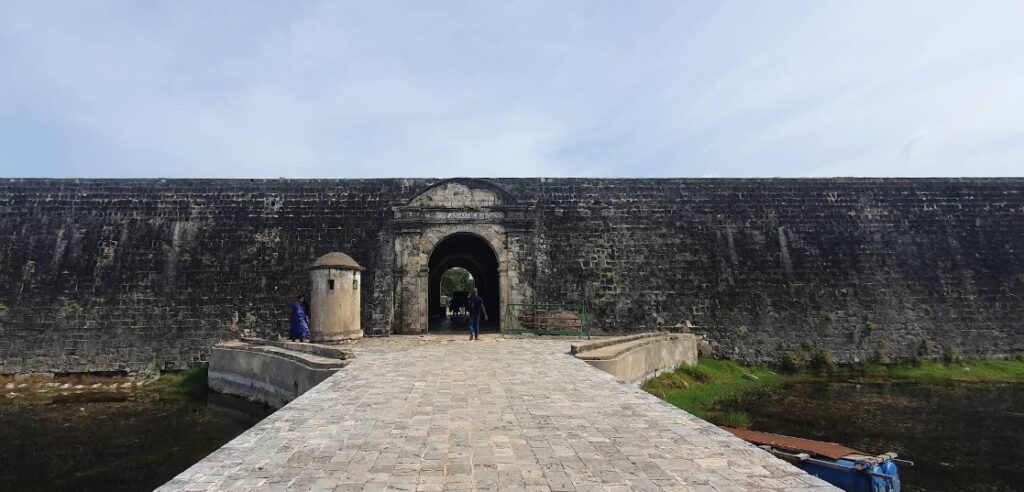
2. Traveling from Colombo to Jaffna
By Train
- Departure: Colombo Fort Railway Station
- Arrival: Jaffna Railway Station
- Duration: Approximately 6 to 7 hours
- Frequency: Daily services available
- Booking: Tickets can be purchased at the station or online through the Sri Lanka Railways website.
- Note: The train journey offers scenic views of the countryside and is a comfortable option for travelers.
By Bus
- Departure: Colombo Central Bus Stand (Pettah)
- Arrival: Jaffna Main Bus Stand
- Duration: Approximately 7 to 8 hours
- Types of Buses: Express and luxury buses available
- Booking: Tickets can be purchased at the bus stand or through various online platforms.
- Note: Buses are a cost-effective option but may be less comfortable than trains.
By Private Vehicle
- Route: Via A9 Highway
- Distance: Approximately 400 km
- Duration: 7 to 8 hours, depending on traffic
- Cost: Varies; approximately 10,000 LKR per person for shared vans
- Note: Traveling by private vehicle offers flexibility and comfort. Expressway tolls apply along the route.
By Domestic Flight
- Departure: Bandaranaike International Airport (Colombo)
- Arrival: Jaffna International Airport
- Duration: Approximately 1 hour
- Frequency: Limited flights available
- Booking: Tickets can be purchased through domestic airlines operating in Sri Lanka.
- Note: Flights are the fastest option but may be more expensive and less frequent .
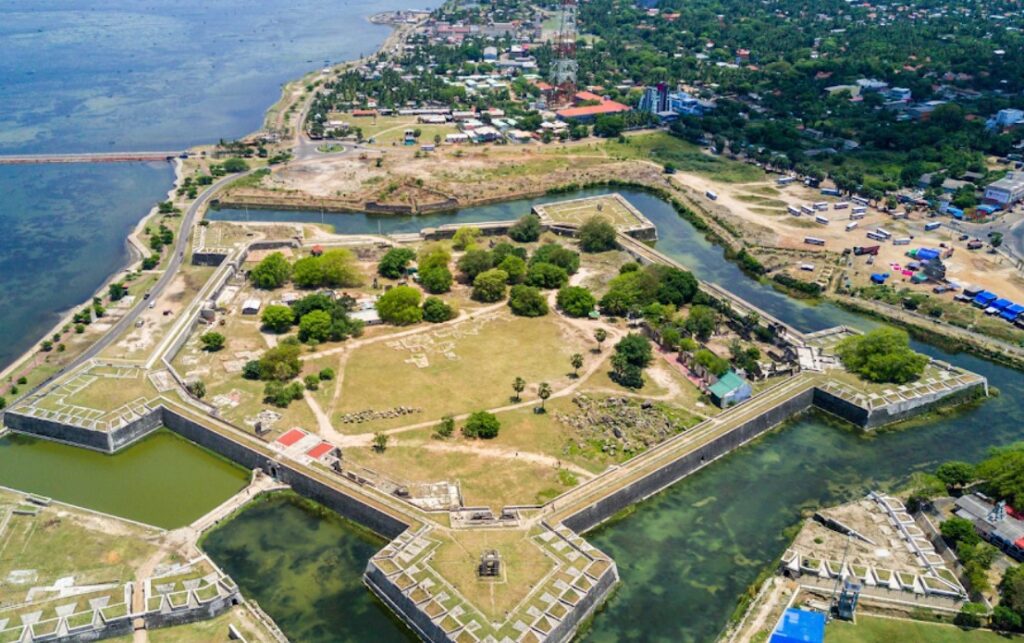
3. Reaching Jaffna Fort from Jaffna City Center
Once in Jaffna, Jaffna Fort is easily accessible:
- By Tuk-Tuk: A short ride from the city center, costing approximately 300–500 LKR.
- By Bicycle: Rent a bicycle and enjoy a leisurely ride to the fort.
- By Walking: If you’re staying nearby, the fort is within walking distance.
4. Nearby Attractions
While visiting Jaffna Fort, consider exploring these nearby attractions:
- Nallur Kandaswamy Temple: A significant Hindu temple located about 3 kilometers from the fort.
- Jaffna Public Library: One of the largest libraries in Sri Lanka, situated around 2.5 kilometers away.
- Jaffna Lagoon: Offers picturesque views and is visible from the fort’s ramparts.
5. Travel Tips
- Best Time to Visit: The dry season from May to October is ideal for visiting Jaffna Fort, as it offers comfortable temperatures and less rainfall .
- Dress Code: Modest attire is recommended when visiting religious sites within the fort.
- Photography: Allowed; however, be respectful of local customs and avoid photographing sensitive areas.
- Guides: Local guides are available and can provide in-depth historical insights into the fort’s significance.
Map of Jaffna Fort
